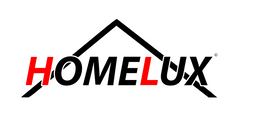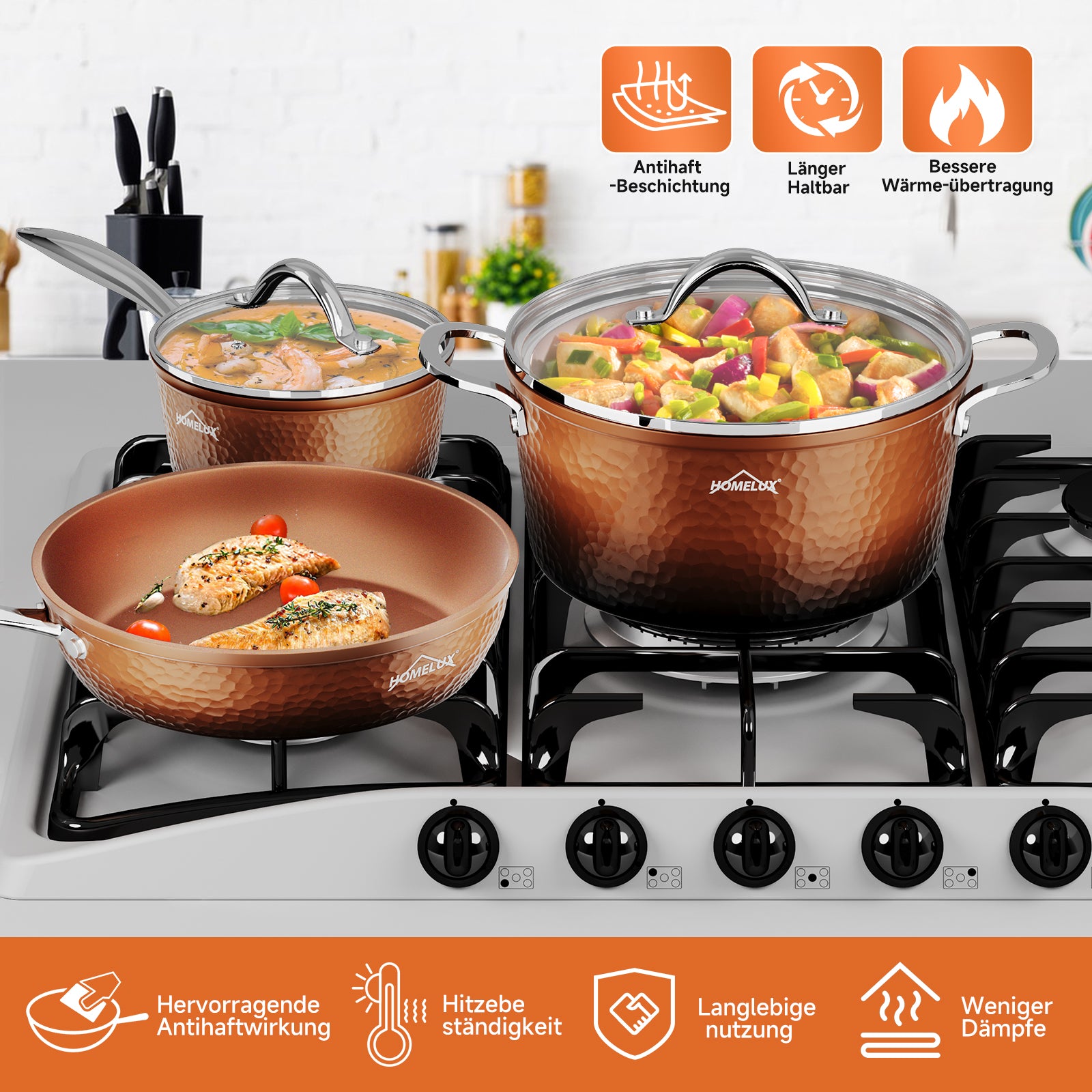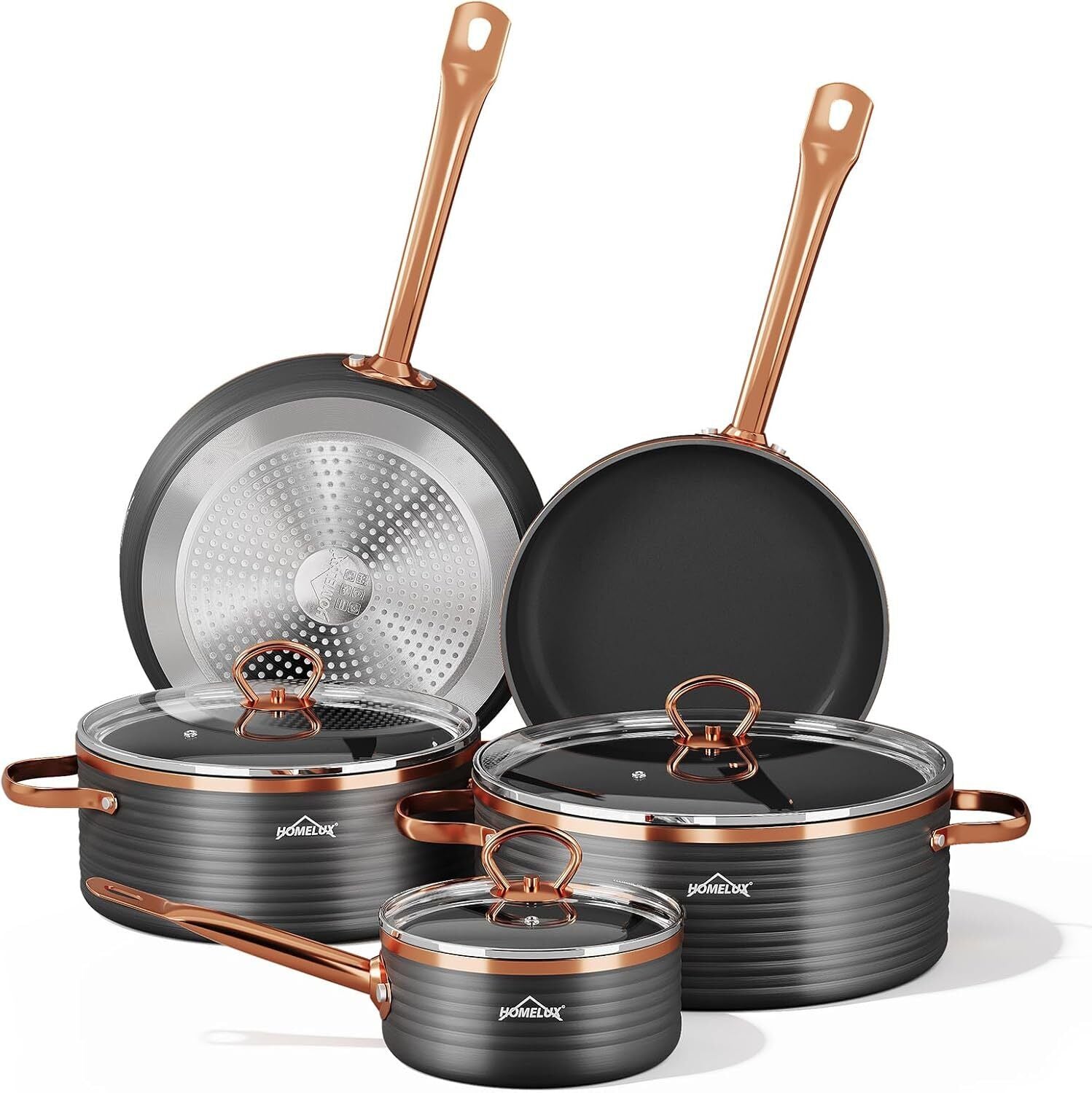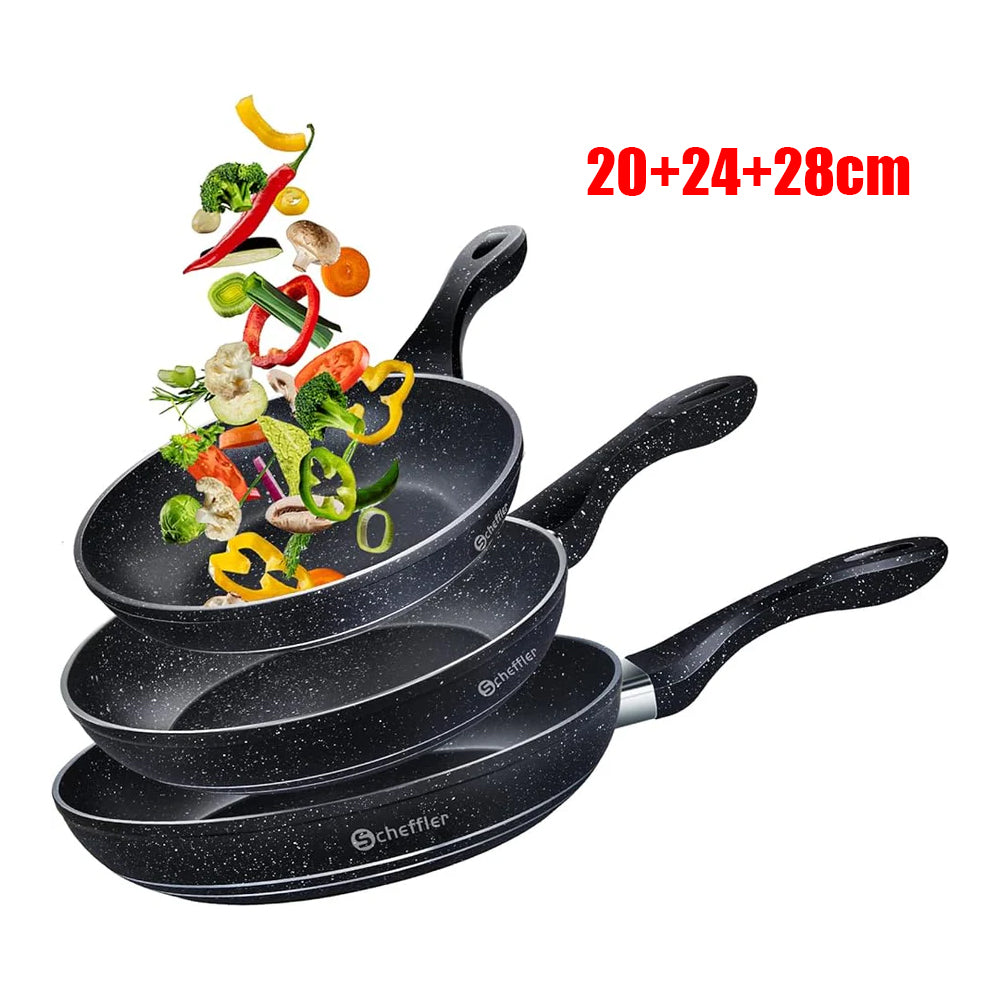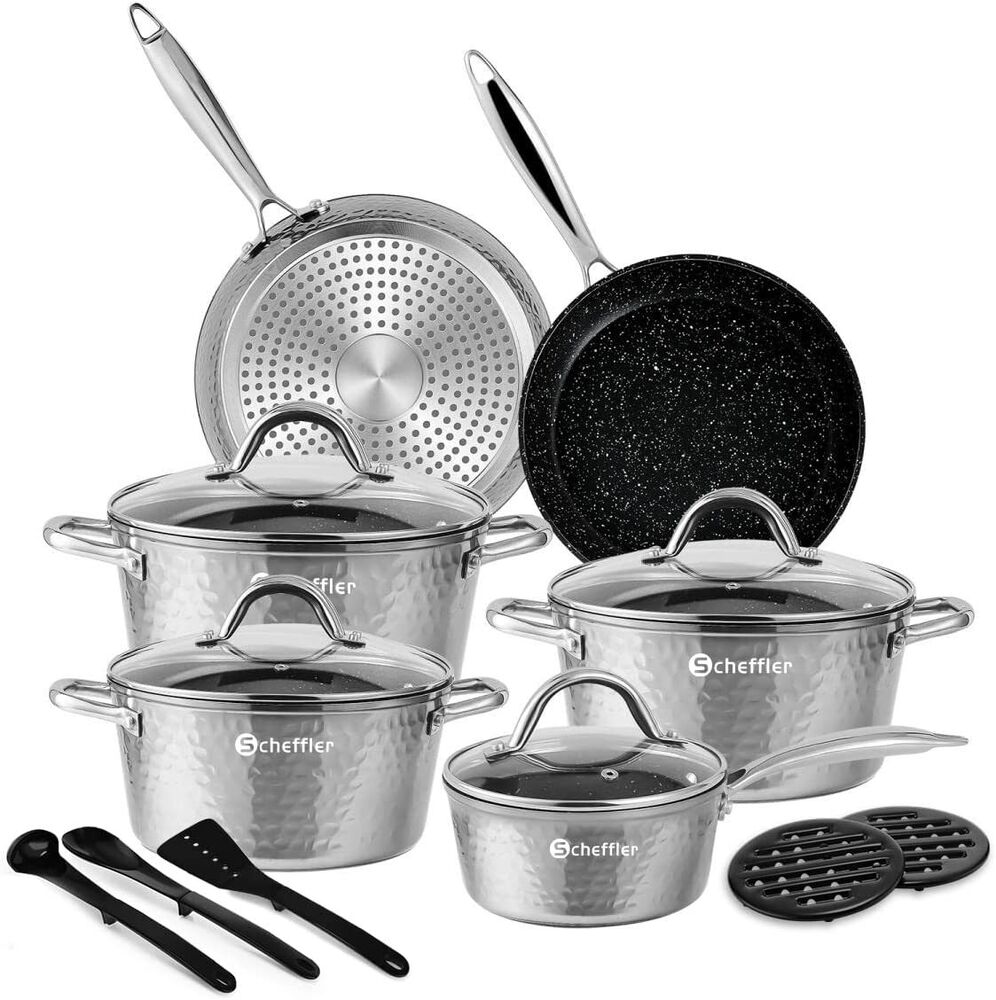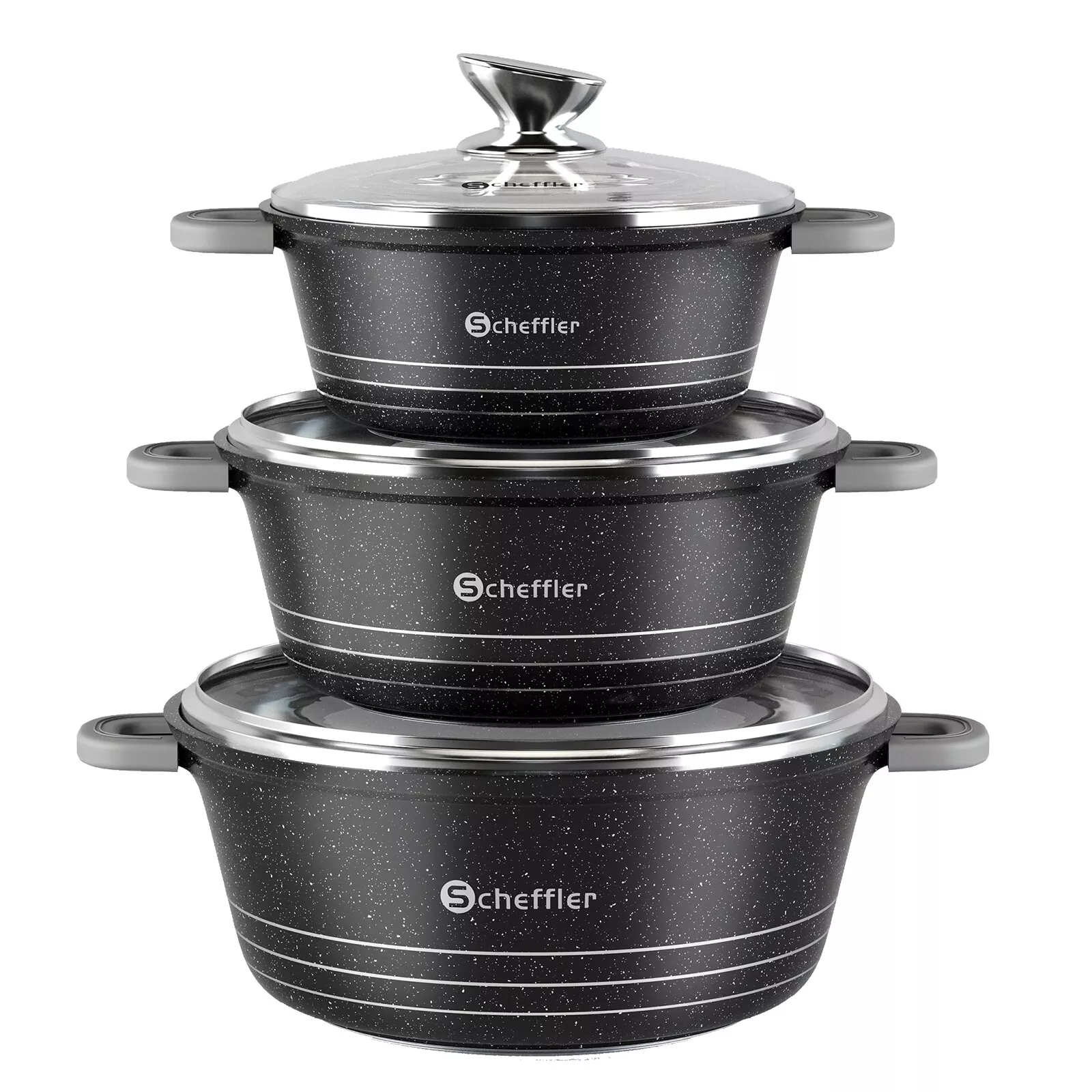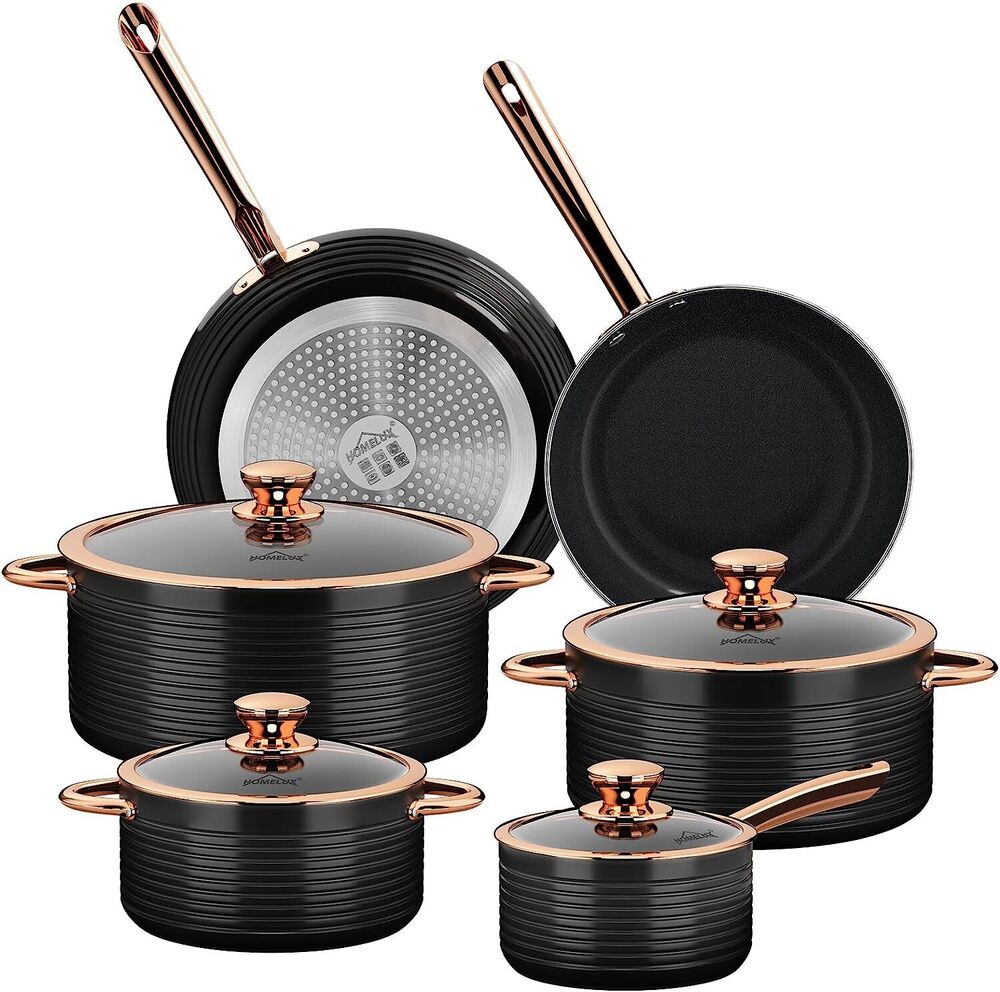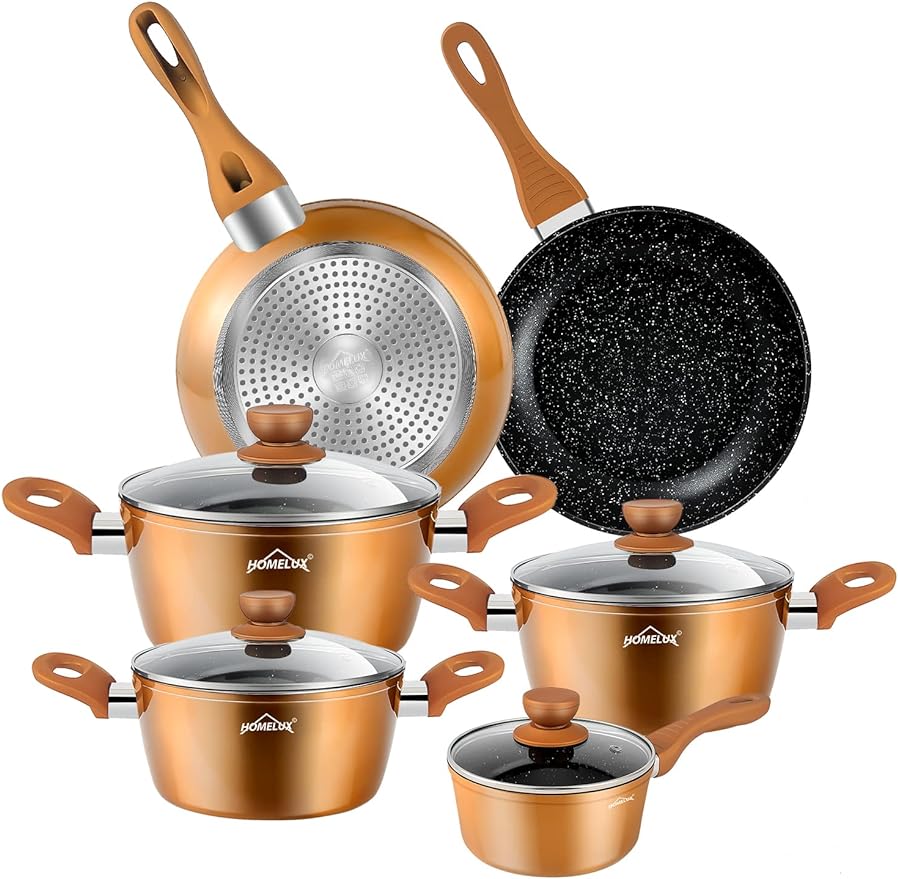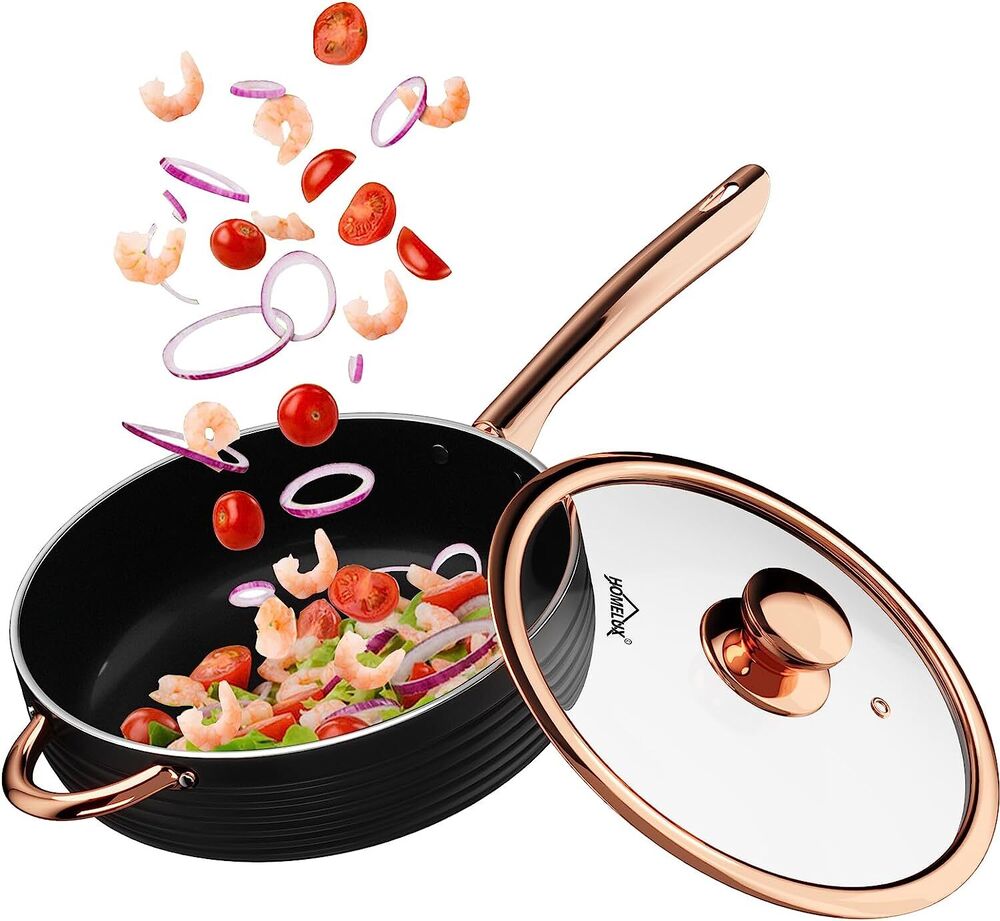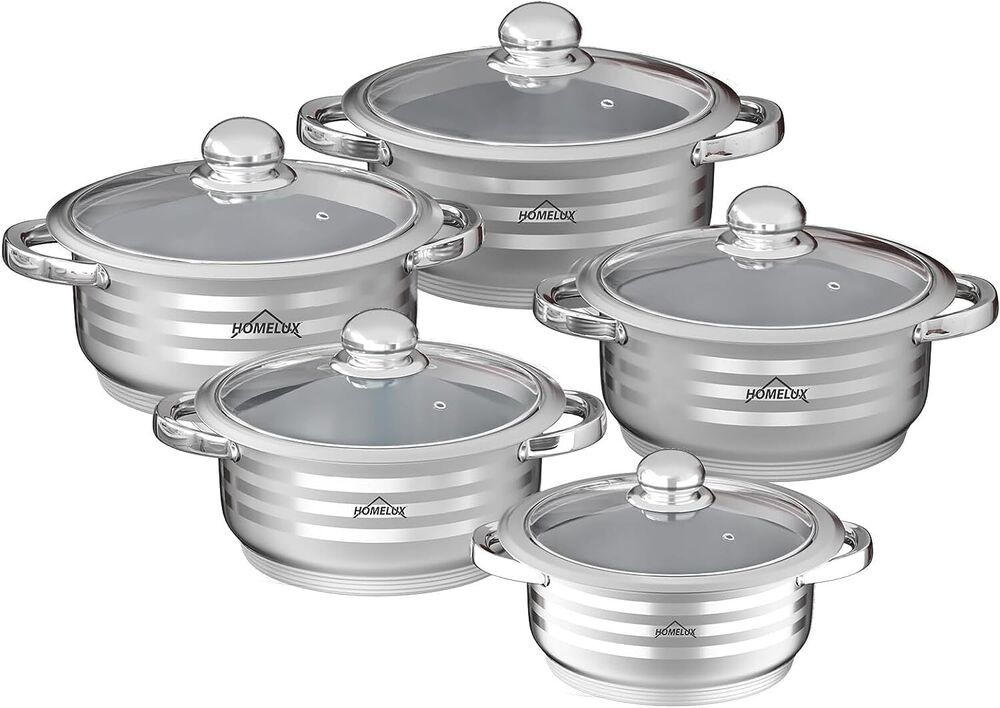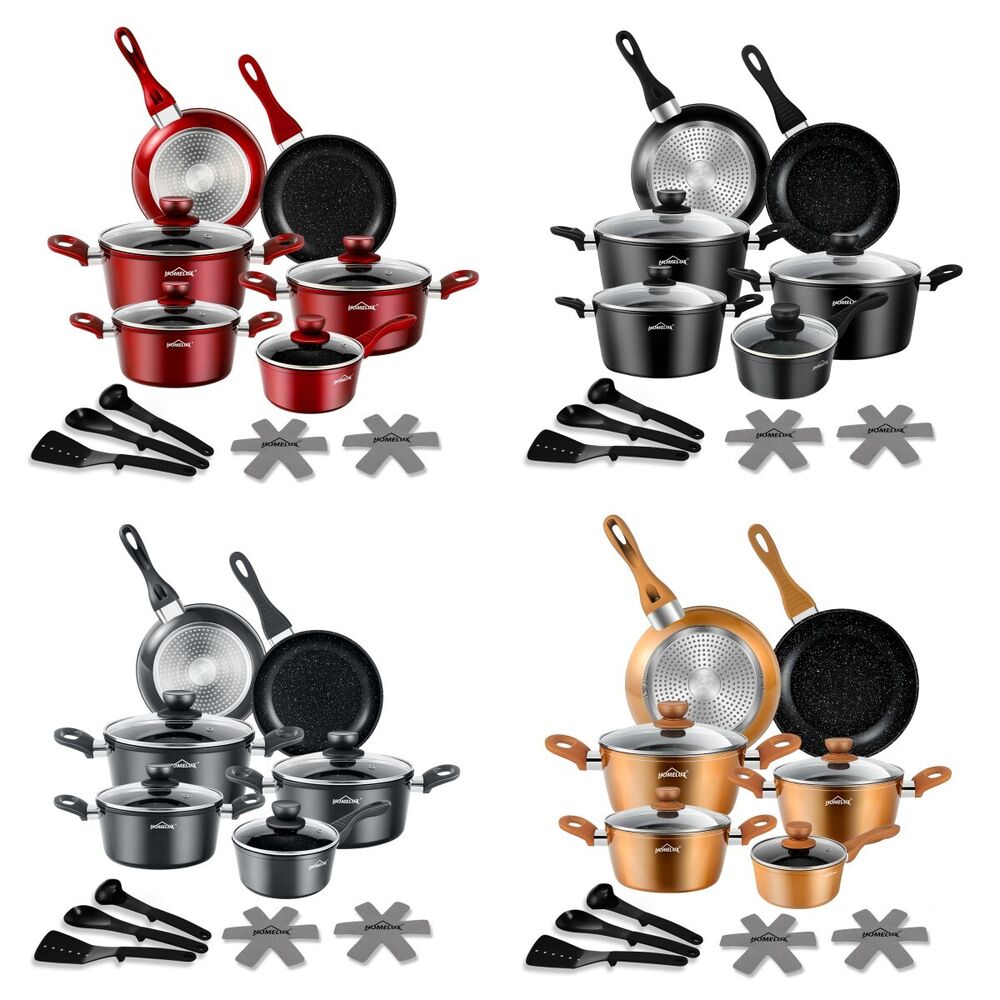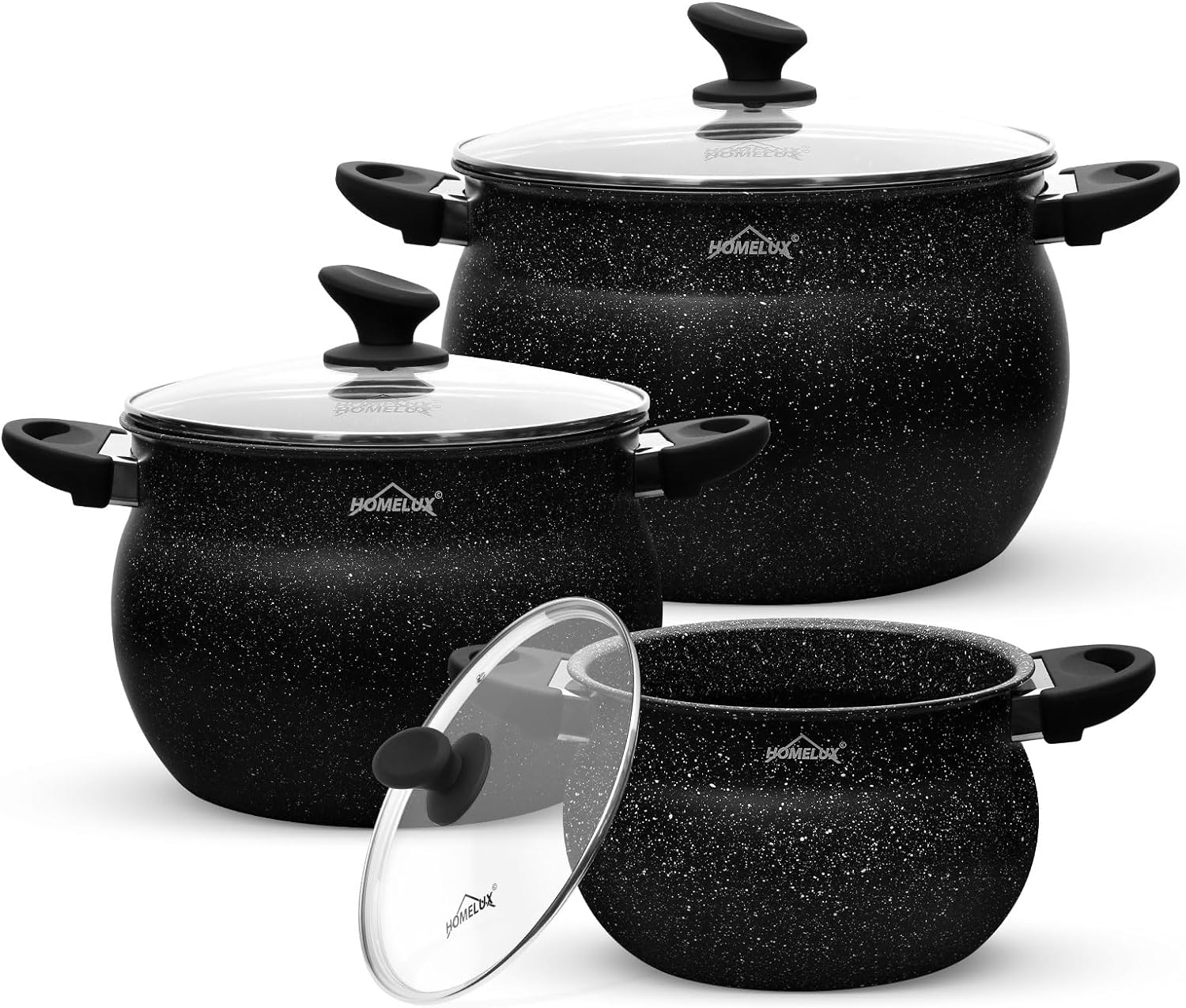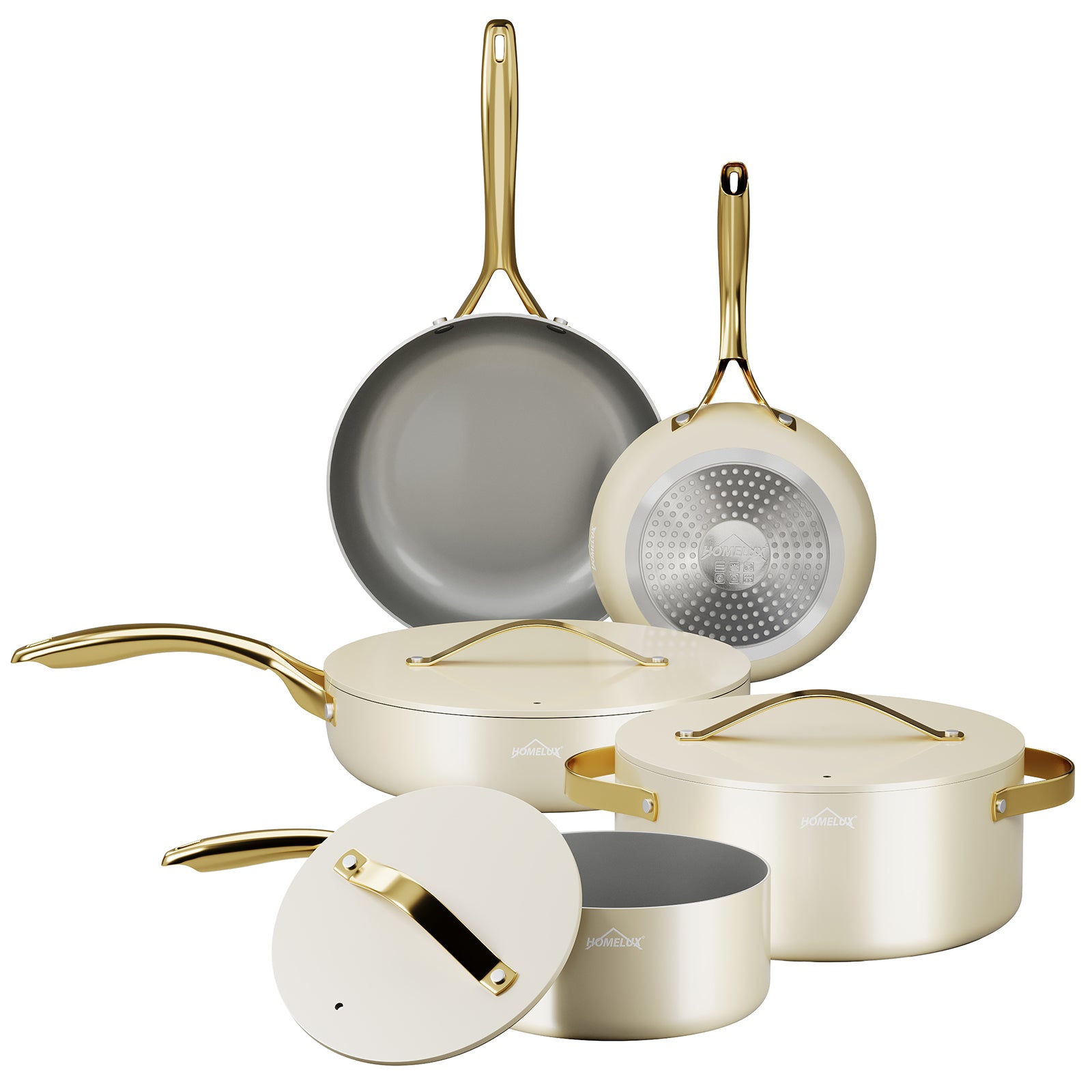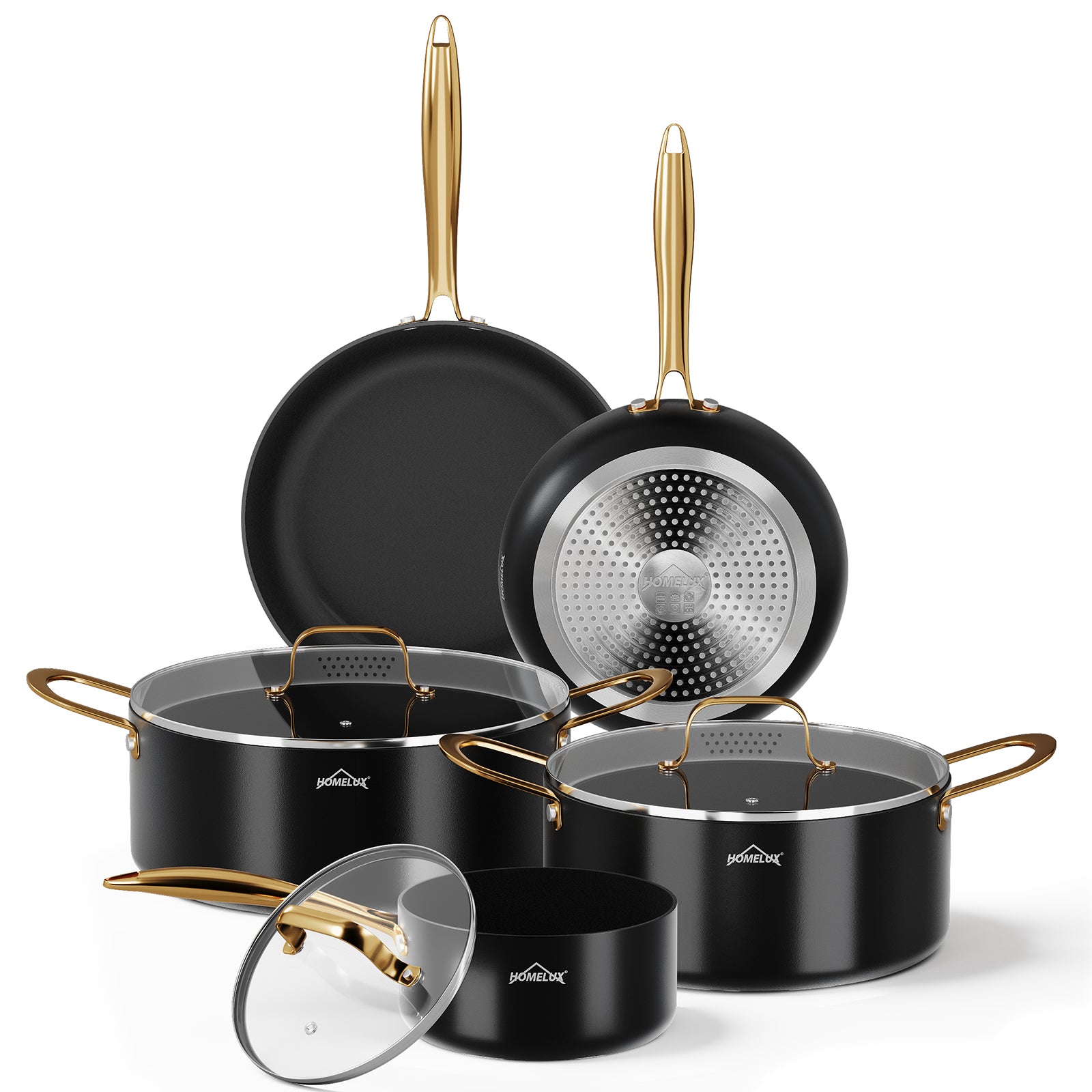Choosing cookware material: advantages and disadvantages of different materials
When choosing cookware, different materials have different advantages and disadvantages that suit different cooking needs. Below we explain the differences between cast iron, stainless steel, aluminum and coated cookware:
Cast iron cookware
Advantages:
- Good heat retention: Cast iron retains heat evenly and is ideal for frying, baking and braising that require a longer heating time.
- Durable: With proper care, cast iron cookware can last for decades.
- Natural non-stick coating: Well-seasoned cast iron has a natural non-stick effect.
Disadvantages:
- Heavy: Cast iron cookware is relatively heavy and requires more strength when using and cleaning.
- High maintenance: It needs to be seasoned regularly to prevent rust and is not dishwasher safe.
- Long heating time: Cast iron requires a longer preheating time, but then retains the heat well.
Stainless steel cookware
Advantages:
- Corrosion resistant: Stainless steel is resistant to acids, bases and salt and does not rust easily.
- Easy to clean: The smooth surface is easy to clean and usually dishwasher safe.
- Attractive appearance: The shiny look and modern design make stainless steel cookware a beautiful eye-catcher in the kitchen.
Disadvantages:
- Poor thermal conductivity: Pure stainless steel does not conduct heat as well as other metals and often requires a copper or aluminum core to improve thermal conductivity.
- Prone to sticking: Stainless steel cookware has a tendency for food to stick and requires more fat or special preheating techniques.
Aluminium cookware
Advantages:
- Good thermal conductivity: Aluminium is an excellent heat conductor and heats up quickly and evenly.
- Lightweight: Aluminum cookware is lightweight and easy to handle.
- Affordable: Aluminum cookware is often cheaper than other materials.
Disadvantages:
- Soft: Aluminum is a soft metal and can be easily scratched or deformed.
- Reactive: Aluminium can react with acidic or alkaline foods and affect the taste or health. Therefore, an anodized coating is often necessary to minimize this problem.
Coated cookware (e.g. non-stick pans)
Coated cookware comes in different styles depending on the type of coating. Here are some common types:
Teflon coating (PTFE)
Characteristics:
- Teflon is the most common non-stick coating and consists mainly of polytetrafluoroethylene (PTFE).
- Excellent non-stick performance, easy to cook and clean.
Advantages:
- Non-stick: Requires less oil and makes cooking easier.
- Easy to clean: Can usually be cleaned with a mild detergent and a soft cloth.
Disadvantages:
- Temperature sensitive: Can decompose at temperatures above 260°C and release harmful gases.
- Sensitive: Can be scratched by metal utensils, wooden or silicone utensils are recommended.
Ceramic coating
Characteristics:
- Made from inorganic materials, contains no PTFE or PFOA.
- Smooth and non-stick surface.
Advantages:
- Heat resistant: Can withstand temperatures above 450°C.
- Healthy and environmentally friendly: Free from harmful chemicals.
Disadvantages:
- Wear and tear: The non-stick effect may decrease over time.
- Fragile: May chip or flake easily.
Silicone coating
Characteristics:
- Made of silicone material, offers a certain non-stick effect.
- Commonly used in baking pans and baking trays.
Advantages:
- Easy to clean: Ideal for baking and low-temperature cooking.
- Safe and durable: resistant to scratches and breakage.
Disadvantages:
- Less heat resistant: Not as heat resistant as Teflon or ceramic.
- Wear: May chip over time.
Enamelled coating
Characteristics:
- Made by fusing glass particles onto metal.
- Smooth, colorful surface.
Advantages:
- Non-stick effect: easy to clean.
- Safe: Free from harmful chemicals, ideal for long cooking.
Disadvantages:
- Fragile: May break upon strong impact.
- High maintenance: Must be handled carefully to avoid scratches.
Titanium coating
Characteristics:
- Made from titanium alloys, often used in high quality non-stick pans.
- Robust and durable surface.
Advantages:
- Durability: Excellent wear and corrosion resistance.
- Non-stick effect: Ideal for all types of cooking.
Disadvantages:
- Cost: More expensive than other coatings.
- Rare: Not as widely used as other coatings.
Conclusion
In summary, the choice of cookware material should be based on specific cooking needs and personal preferences. For example, cast iron may be suitable for those who value long cooking times and heat retention; stainless steel for those who prefer durability and easy cleaning; aluminum for those who value lightness and quick heating; and coated cookware for those who want convenience and non-stick properties.
Related Links:
https://www.homelux-shop.de/collections/kochgeschirr
